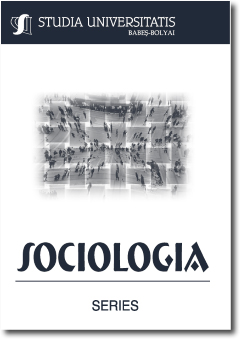NATIONAL ATTITUDES OF ETHNIC HUNGARIANS FROM ROMANIA, SLOVAKIA, SERBIA AND UKRAINE: A COMPARATIVE PERSPECTIVE
NATIONAL ATTITUDES OF ETHNIC HUNGARIANS FROM ROMANIA, SLOVAKIA, SERBIA AND UKRAINE: A COMPARATIVE PERSPECTIVE
Author(s): Valér VeresSubject(s): Social Sciences
Published by: Studia Universitatis Babes-Bolyai
Keywords: minority; attitudes; national identity; interethnic relations.
Summary/Abstract: The article comparatively analyses national identifications of Hungarian minorities living in Romania, Slovakia, Serbia (Voivodina) and Ukraine, their ethnic and national attitudes and intergroup relations, including the ethno-national minority – majority relationship, and attitudes towards Hungary and the Roma community. Of interest is the presence and extent of ingroup-outgroup differentiation, and possible cross-national differences and similarities in national attitudes, identity, and perceived social distance. I examined the following two research hypotheses: (1) The Hungarian community in a given country identifies closer with other Hungarian communities living in the diaspora than with Hungarians in Hungary, or the majoritarian population in their country of citizenship. (2) Members of the Hungarian minorities generally perceive a greater social distance in relation to the majority population of a particular country as compared to Hungary’s population, but cross-country differences are likely. The empirical data source of my research is the Karpat Panel survey, first wave (2007), collected on multi-stratified random sample (N=2,915), representing the Hungarian communities in Romania, Slovakia, Serbia and Ukraine, as well as a control sample from Hungary. I used a variety of statistical techniques, including OLS regression and multidimensional scaling – Alscal method based on the average values of social distances towards different ethnic and national communities, as well as other social groups – to analyse the relations of interest.
Journal: Studia Universitatis Babes-Bolyai - Sociologia
- Issue Year: 58/2013
- Issue No: 1
- Page Range: 87-112
- Page Count: 26
- Language: English

